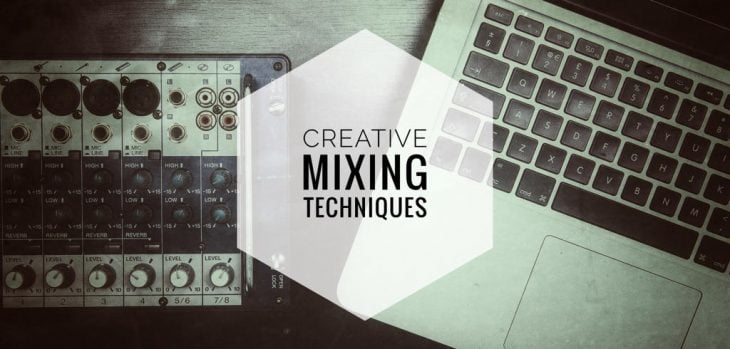Amp and speaker emulations are used a lot in mixing and music production to give those electric guitars and bass guitars that were plugged straight into a DI box, or even straight into your audio interface, a realistic sound.
You may not have thought about it, but they really are versatile mixing tools and much more than a one-trick pony.
#1 Fake Stereo
Did you know that you can use speaker emulations to achieve a convincing stereo image for mono sounds? Loading an impulse of a guitar cabinet into a convolution (IR) reverb is a great way to go there, but plugins that emulate speakers or even short reverbs will also do the trick.
Here’s how you do it: On two mono AUX channels, insert a trim plugin or some other plugin that lets you flip the polarity (phase). Now add your choice of speaker emulation and pan the AUX channels hard left/right and flip the polarity on one of them.
On your mono track, turn up the sends to both of the AUX channels until you have a stereo image you like. This stereo effect has the great advantage that it will disappear completely when the mix is played in mono, without messing up the phase of the original track.
#2 Reverb Presence
One way to add presence to an instrument or vocal without processing the original sound is to insert a reverb on an AUX, adding a guitar amplifier emulation after it. A short reverb with a bit of pre-delay is preferred if you don’t want to move the dry sound back in the mix too much.
The amp emulation will give the track a lot of mid-range bite that cuts through the mix beautifully. And since the dry sound isn’t processed directly, this can be a relatively ”non-destructive” effect if used with care. It makes sense to think of guitar amp emulations as booth EQ and distortion.
3# Drum enhancement
For most people, 808-style kicks can be a hassle to mix. One problem is that their fundamental frequencies are really too low to be heard on small speakers. A common technique to counter this is adding upper harmonics to the 808 kick. This will add energy in higher frequencies which are more easily heard on smaller speakers and will make the 808 cut through a busy arrangement with ease. This is done with saturation and distortion.
Using a guitar amp emulation in parallel on an 808 kick can really take care of the adding upper harmonics part, as well as EQing the sound to cut through the mix. Lastly, it adds a lot of character; and using it in parallel gives you full control over the amount of character added.
If you’re new to parallel processing, it means that you preserve a version the original unprocessed sound in the mix while adding the effect.
There are essentially three ways to do parallel processing. You can duplicate the track and insert the effect on the new track, then adjust the volume of the processed track to add more or less of the effect. Another way is to insert the effect on an AUX and adjust the send for more or less effect. Finally, if your plugin has a dry/wet knob, you can simply use the effect as an insert on your track and adjust the knob on the plugin itself.
Using this technique on a snare drum is a really cool way to add character to a drum sound while giving it a lot more attitude and bite. This works best in parallel and is worth a try on any kind of snare drum, whether from an acoustic drum kit or a drum machine.
More mixing tips: Making Sound ($28)



1 Comment
Dean Nekro
onGreat area to cover Cristofer, Indeed pedal, preamp, power amp, head, cab, combo…etc. all can work extremely well in or on certain source elements magnificently that it is an area that should be fully explored, Even more so with plugins as there are no send to output which is balanced to a re-amp/reverse DI box for unbalanced signal unbalanced back to balanced signal and back in to print the results…So no excuses for missing out. Perhaps the one I’ve personally used more than any other on non-guitar and bass guitar material is Guitar Rig, It’s an excellent multi-FX processor.
Nice one and all the best your way